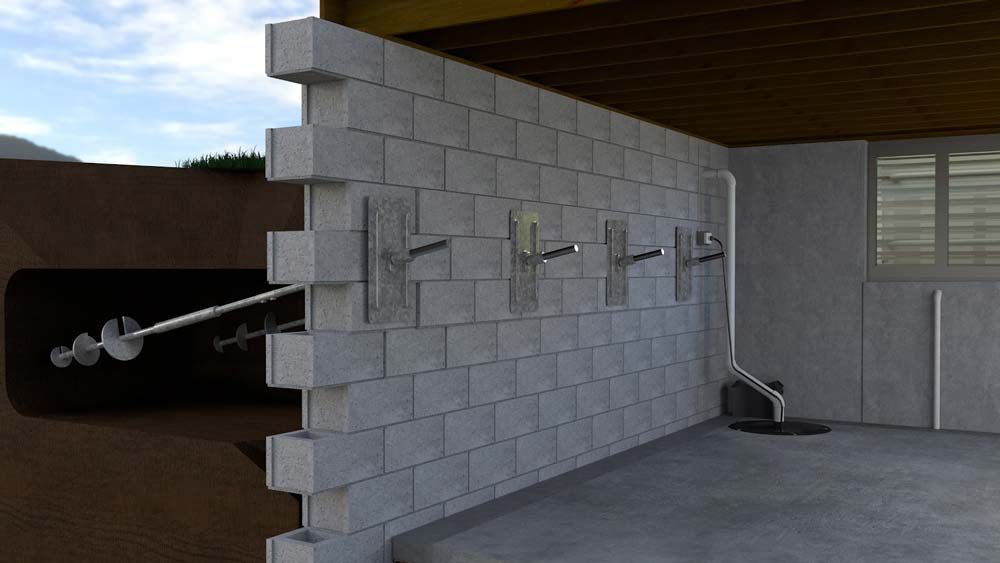Helical wall tiebacks are designed to straighten or strengthen basement and retaining walls. This method of shoring has become very popular with the engineering community due to its strength and ease of measuring capacity.
Helical tiebacks have many of the same benefits as other helical anchors in the fact that they install with lightweight, portable equipment, are not adversely affected by weather, and can be load tested immediately upon installation.
What Are Helical Tieback Anchors?
Helical tieback anchors consist of a helical-shaped steel rod that is screwed deep into the ground, providing the necessary stability and support to the foundation.
How Are Helical Tiebacks Installed?
Installing helical tieback anchors involves drilling a hole through the foundation wall. The anchor is inserted through the hole and turned into place until it reaches the desired depth and load-bearing capacity.
Can you install helical tieback anchors yourself?
Installing helical tieback anchors is a specialized and technical process that requires knowledge, skills, and experience in geotechnical engineering.
Advantages Of A Helical Tieback System
Helical tieback anchors offer several advantages over traditional anchoring systems, such as driven piles or drilled shafts. One of the main benefits of helical tieback anchors is their ease of installation. Unlike traditional anchoring methods, which require heavy equipment and extensive excavation, helical tiebacks can be installed quickly and with minimal disturbance to the surrounding soil.
Another advantage of helical tieback anchors is their ability to resist tension and compression loads. This flexibility allows them to be used in various applications, from slope stabilization to foundation repair. Additionally, helical tieback anchors can be designed to meet specific engineering requirements, including soil type, soil properties, and anticipated loads.
Helical tieback anchors are also an environmentally-friendly option, as they generate minimal waste and disturb the surrounding soil less than other anchoring methods. They reduce the need for extensive excavation and can often be installed without disrupting existing structures or landscapes.
In terms of cost, helical tieback anchors are generally more cost effective than traditional anchoring methods. Installation costs are typically lower due to the ease of installation and minimal equipment requirements, and they require less maintenance over time.
Helical Tieback Applications
Often helical tiebacks are the preferred method of shoring by engineers due to their capacity to torque relationship and predictability of ultimate capacity. Helical tiebacks are used for many applications, including:
- Sea Walls
- Basement Walls
- Retaining Walls
- Shoring
- Temporary Wall Support
- Tilt-Up Construction
Foundation Professionals of Florida offers preliminary design services for helical tieback systems to our national network of contractors and their engineers. This design assistance provides product recommendations and calculations based on information from the installing contractor or engineer of record. We will help you match the correct helical product to your application or load requirement, whether for a soldier beam and lagging wall, whaler braced wall or a simple concrete retaining wall.
We also offer several connection methods, including wall plates, all thread adapters, or specially designed rebar connection plates. With capacities ranging from 70kips to over 200kips, we have a helical tieback that will meet your requirements.
Foundation Professionals of Florida serves the cities of Tallahassee, Lake City, Jacksonville, FL, and the surrounding areas.

